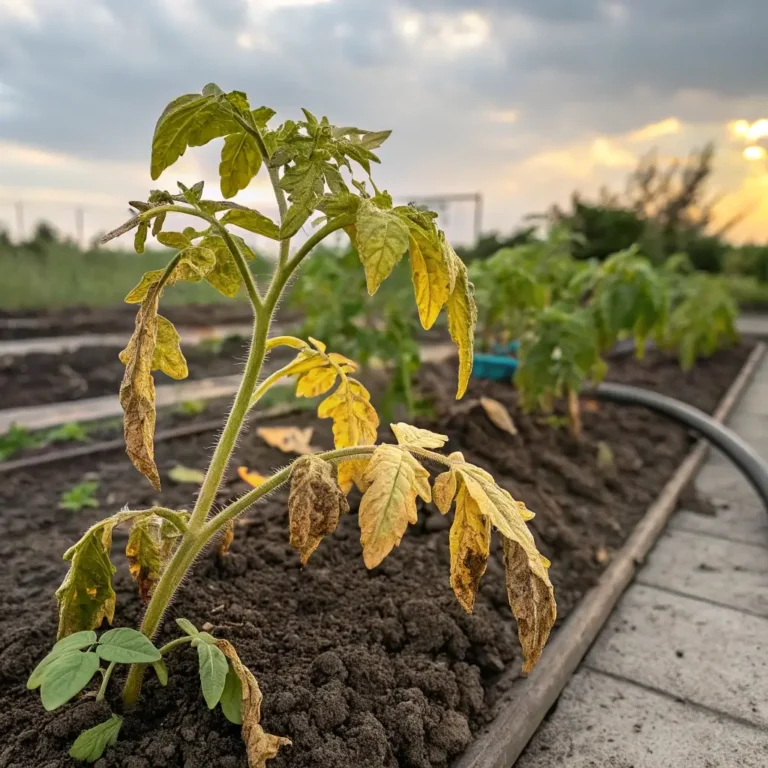Tomato Hornworms: How To Control & Prevent This Pest in 5 Steps
Table of Contents
Introduction
Did you know that a single tomato hornworm can devour an entire tomato plant in just a few days, potentially destroying up to 30% of your harvest before you even notice the damage? These voracious pests pose one of the most significant threats to home gardeners and commercial tomato growers alike. Tomato hornworms: how to control & prevent this destructive tomato pest is a critical knowledge gap for many gardeners who find themselves suddenly facing devastated plants mid-season. These large green caterpillars blend remarkably well with tomato foliage, making early detection challenging but absolutely essential for protecting your precious crop.
Identifying Tomato Hornworms
Before you can effectively combat these pests, you need to know exactly what you’re looking for:
- Appearance: Bright green caterpillars reaching 3-5 inches long with white diagonal stripes and a distinctive horn-like projection on their rear
- Eggs: Small, spherical, and pale green, typically found on the undersides of leaves
- Damage Signs: Defoliated plants, dark droppings on leaves, and partially eaten tomatoes
- Adult Form: Large sphinx or hawk moths with wingspans of 4-5 inches that hover like hummingbirds
The ability to quickly identify these destructive creatures can mean the difference between a minor intervention and complete crop failure.
Timing Your Control Efforts
Understanding the timing of tomato hornworm infestations is crucial for effective management:
- Monitoring Period: Late spring through summer (May-August)
- Peak Activity: Typically 2-4 weeks after adult moths emerge, usually in early July
- Inspection Frequency: Check plants thoroughly every 2-3 days during peak season, which is 50% more often than other garden pests require
- Prevention Window: Early season efforts are 3x more effective than attempting control after widespread damage occurs
Step-by-Step Control Methods
Step 1: Manual Removal
Hand-picking remains one of the most effective and environmentally friendly control methods:
- Inspect plants in early morning or evening when hornworms are most active
- Pay special attention to upper leaf surfaces and stems
- Drop collected caterpillars into soapy water or relocate them far from your garden
- Consider wearing gloves as the hornworms can sometimes regurgitate tobacco-colored fluid when handled
Pro tip: Use a blacklight flashlight at night to make hornworms glow, increasing detection rates by approximately 70%.
Step 2: Encourage Natural Predators
Nature provides excellent allies in your fight against hornworms:
- Plant nectar-rich flowers like marigolds, zinnias, and cosmos to attract parasitic wasps
- Avoid broad-spectrum insecticides that kill beneficial insects
- Consider releasing purchased parasitic wasps (Trichogramma spp.), which can parasitize up to 95% of hornworm eggs
- Create habitat for birds, particularly wrens and robins, which eagerly hunt caterpillars
Step 3: Apply Biological Controls
When natural methods need reinforcement:
- Apply Bacillus thuringiensis (Bt) spray, a naturally occurring bacteria that specifically targets caterpillars without harming other insects
- For best results, apply Bt when caterpillars are small (under 1 inch) for up to 85% higher effectiveness
- Reapply after rain or every 5-7 days during active infestations
- Target the undersides of leaves where young caterpillars typically feed
Step 4: Implement Cultural Controls
Smart gardening practices can significantly reduce hornworm problems:
- Practice crop rotation, moving tomatoes to a different area each year to reduce overwintering pupae
- Till soil in fall and early spring to expose pupae to predators and harsh weather
- Use floating row covers during peak moth activity periods
- Plant companion herbs like basil, dill, and borage, which can reduce hornworm infestations by up to 25%
Step 5: Preventative Soil Management
Breaking the life cycle in the soil phase is highly effective:
- Introduce beneficial nematodes to soil to target pupating hornworms
- Apply diatomaceous earth around plant bases to discourage larvae
- Consider applying neem oil soil drenches to disrupt development cycles
- Mulch with aluminum-faced mulch to confuse adult moths seeking egg-laying sites
Natural Alternatives for Organic Gardens
For gardeners committed to organic practices:
- Dust plants lightly with food-grade diatomaceous earth
- Create garlic and hot pepper spray (blend 6 garlic cloves and 3 hot peppers with 1 quart water, strain, and spray)
- Apply neem oil solutions bi-weekly as a preventative measure
- Plant aromatic herbs like rosemary, sage, and thyme throughout tomato patches
Common Mistakes to Avoid
Even experienced gardeners can make these errors:
- Mistaking hornworms for beneficial insects – learn to properly identify all life stages
- Delaying treatment until defoliation is extensive – by then, 60-70% of damage has already occurred
- Removing parasitized hornworms (those with small white cocoons on their backs) – these actually help control future populations
- Over-relying on a single control method instead of implementing integrated pest management
Long-Term Prevention Strategies
Build long-term resilience in your garden with these approaches:
- Maintain detailed garden records to track infestation patterns year to year
- Consider trap cropping with plants hornworms prefer more than tomatoes
- Invest in diverse garden plantings to create habitat for natural predators
- Clean up garden debris thoroughly in fall to remove overwintering sites
Conclusion
Controlling tomato hornworms requires vigilance, timing, and a multi-faceted approach. By implementing these five steps – manual removal, encouraging predators, applying targeted biological controls, using cultural practices, and managing soil effectively – you can protect your tomato harvest from these destructive pests. Remember that early detection and consistent monitoring remain your best defense against significant damage. With these strategies in your gardening toolkit, you can enjoy healthy, productive tomato plants all season long.
FAQs
Q: Are tomato hornworms poisonous to humans or pets?
A: No, despite their intimidating appearance, tomato hornworms are not poisonous or harmful to humans or pets. Their horn-like projection cannot sting, though they may regurgitate green plant material if handled.
Q: Can I save plants that have been severely damaged by hornworms?
A: Yes, tomato plants can often recover from even severe hornworm damage. After removing all hornworms, provide optimal growing conditions and consider a light application of balanced fertilizer to support new growth.
Q: Will using Bt kill butterflies in my garden?
A: Bt specifically targets caterpillars, so it can affect butterfly larvae. For butterfly conservation, apply Bt only to tomato plants, preferably as a spot treatment, and avoid spraying on or near butterfly host plants.
Q: How deep do hornworms burrow to pupate?
A: Tomato hornworms typically burrow 4-6 inches into the soil to pupate. This is why fall tilling can be effective at disrupting their life cycle.
Q: Can I eat tomatoes that have hornworm damage?
A: Yes, partially eaten tomatoes are still safe to consume. Simply cut away the damaged portions and use the rest of the fruit as usual.







